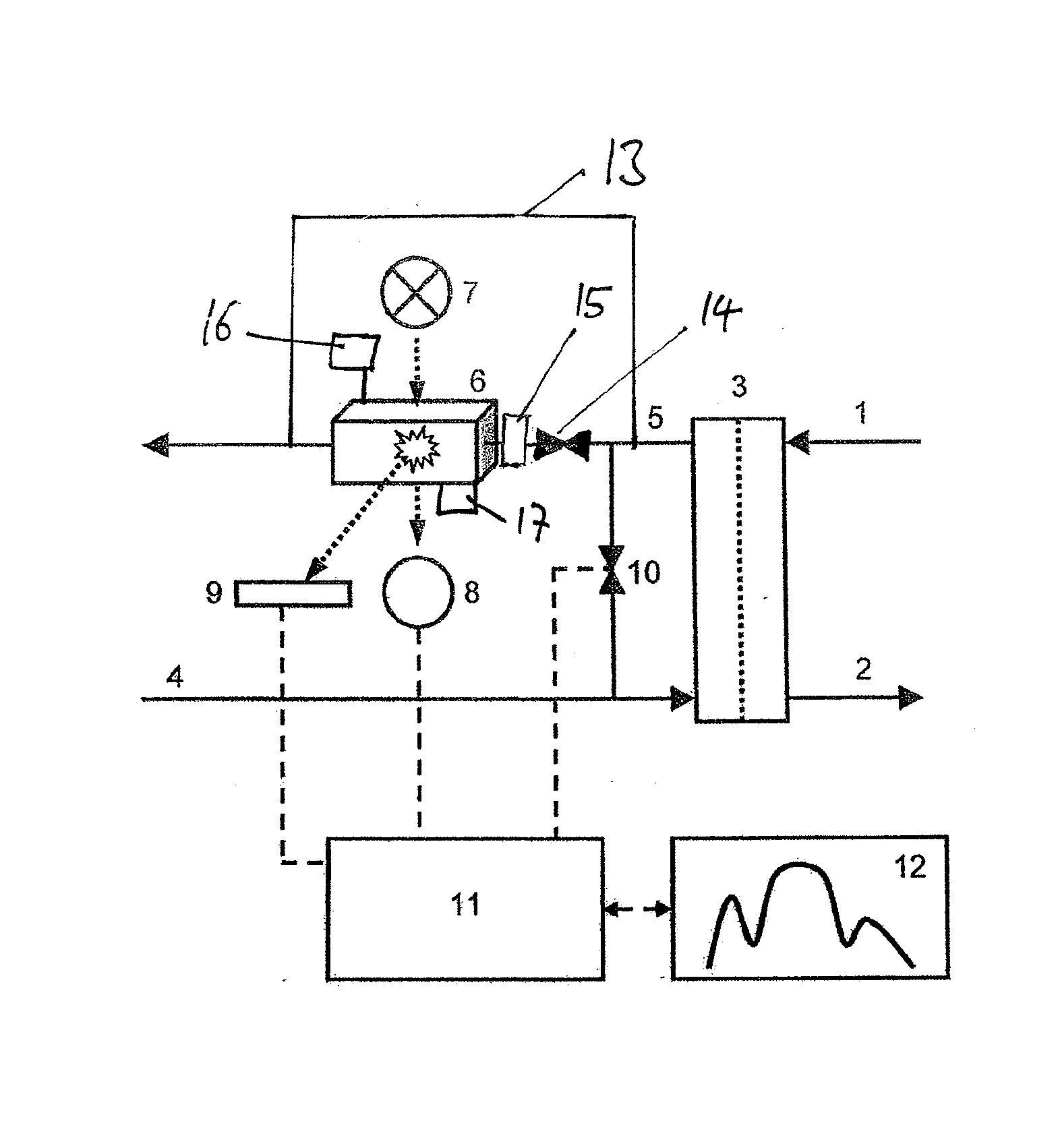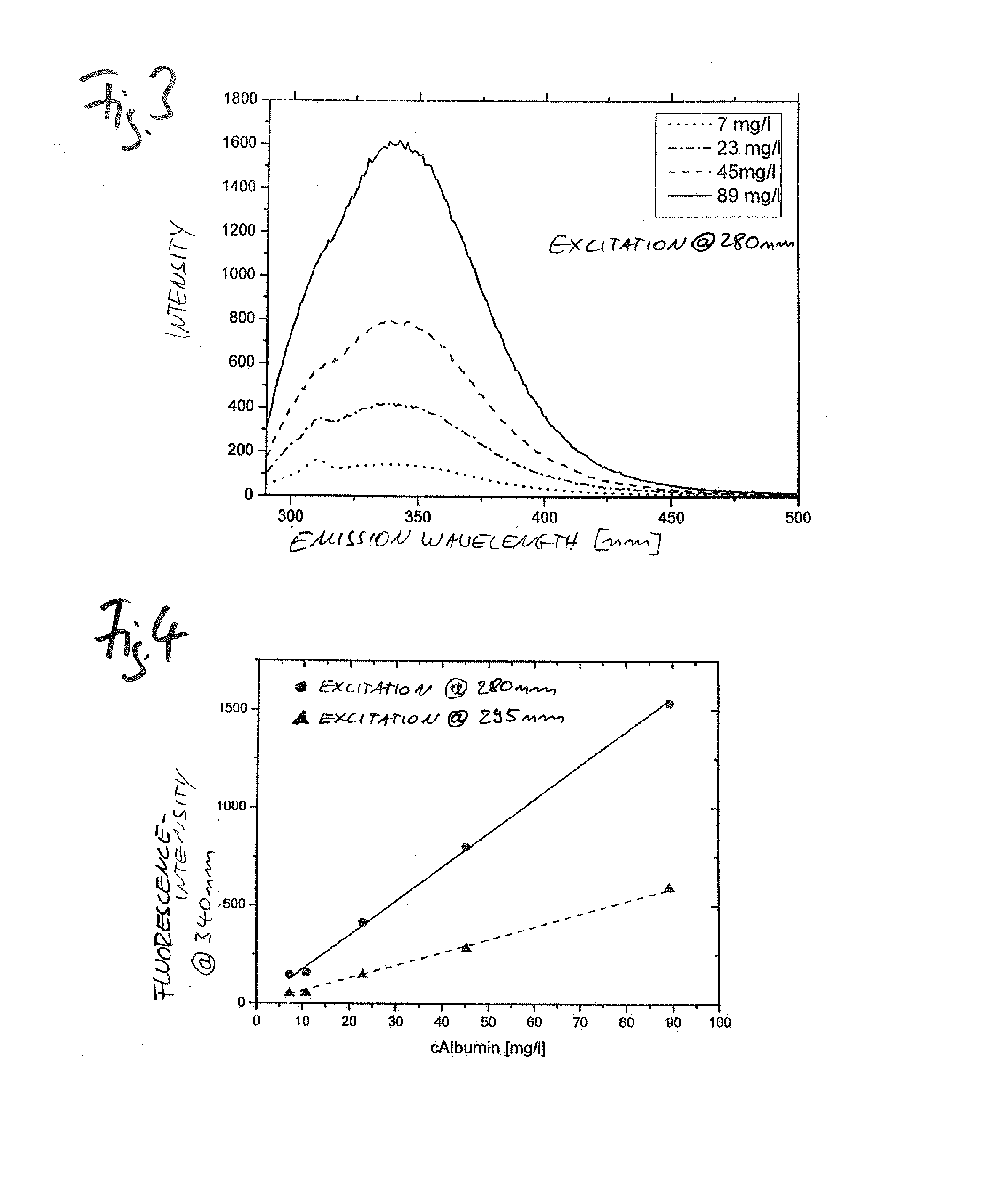Method and apparatus for monitoring a treatment of a patient, preferably for monitoring hemodialysis, hemodiafiltration, and/or peritoneal dialysis
a technology for monitoring and treatment, applied in the direction of spectroscopy, optical radiation measurement, spectral modifiers, etc., can solve the problems of inability to dialyze small molecules, difficult to remove large molecules through porous membranes, and inability to monitor the treatment of patients, etc., to achieve the effect of high fluorescence efficiency of tryptophan, sufficient efficiency and increased method accuracy
- Summary
- Abstract
- Description
- Claims
- Application Information
AI Technical Summary
Benefits of technology
Problems solved by technology
Method used
Image
Examples
Embodiment Construction
[0057]In the following, the disclosure will be explained in more detail with reference to the accompanying Figures. In the Figures, like elements are denoted by identical reference numerals and repeated description thereof may be omitted in order to avoid redundancies.
[0058]FIG. 1 is a schematic view of a system for treating a patient, in particular an apparatus for dialysis. The system includes an apparatus for monitoring the treatment of a patient.
[0059]In particular, FIG. 1 shows a dialyzer comprising a porous, semi-permeable membrane 3. On the right-hand side of FIG. 1 the blood circulation of the patient is connected to the membrane 3 and on the left-hand side the dialyzing liquid circulation is connected to the membrane 3. The principle of hemodialysis is well known and involves the diffusion of solutes in the blood through the semi-permeable membrane 3. The diffusion is induced by a concentration gradient of certain substances across the membrane 3.
[0060]Blood from the patien...
PUM
| Property | Measurement | Unit |
|---|---|---|
| wavelength | aaaaa | aaaaa |
| wavelength | aaaaa | aaaaa |
| wavelength | aaaaa | aaaaa |
Abstract
Description
Claims
Application Information
 Login to View More
Login to View More - R&D
- Intellectual Property
- Life Sciences
- Materials
- Tech Scout
- Unparalleled Data Quality
- Higher Quality Content
- 60% Fewer Hallucinations
Browse by: Latest US Patents, China's latest patents, Technical Efficacy Thesaurus, Application Domain, Technology Topic, Popular Technical Reports.
© 2025 PatSnap. All rights reserved.Legal|Privacy policy|Modern Slavery Act Transparency Statement|Sitemap|About US| Contact US: help@patsnap.com



